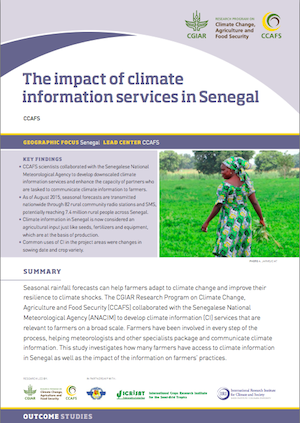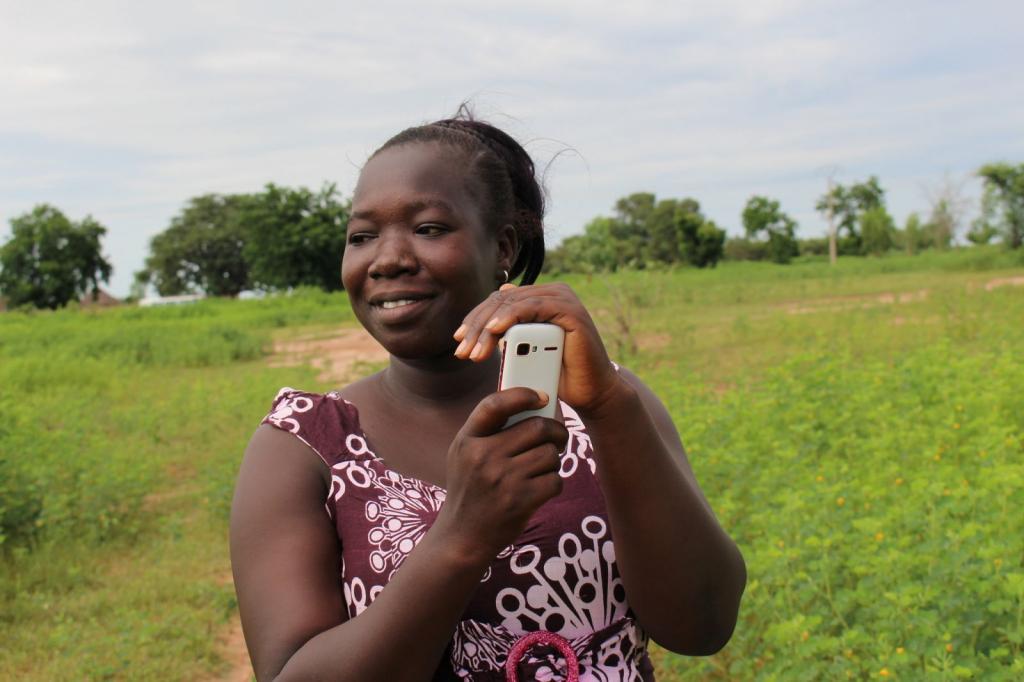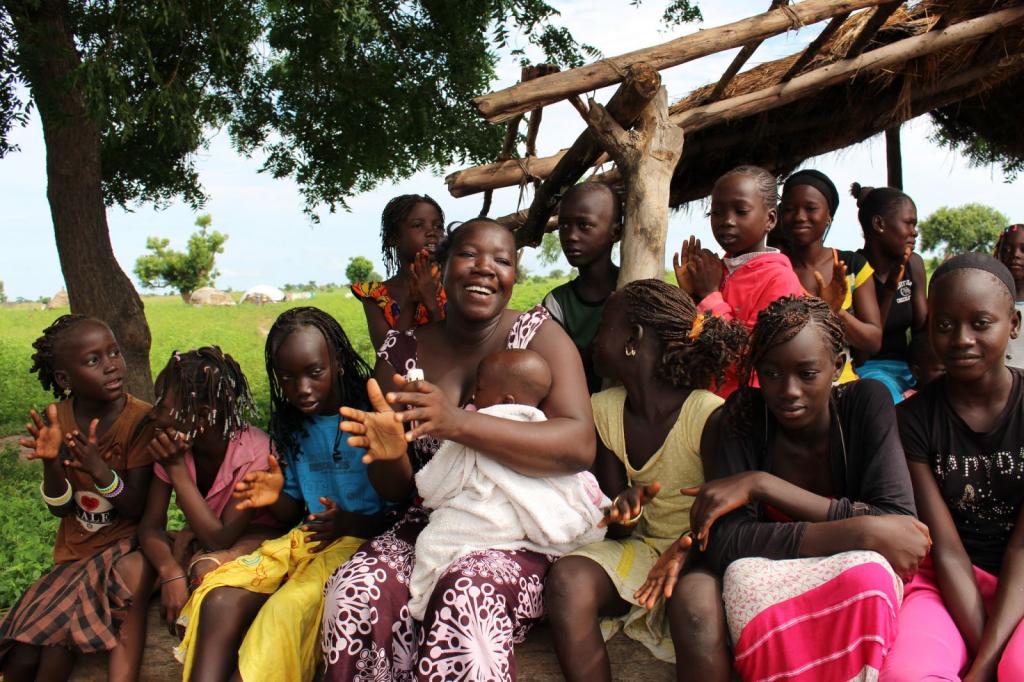There once was a woman named Mariama

By applying climate information to her farming, Mariama Keita has become a major agricultural producer and a role model for the women in her village.
In Depth
Listen to a profile of Mariama on Nationa Public Radio (NPR)
Once upon a time, a 25 year-old woman, Mariama Keita, lived in a village called Sikilo, near Kaffrine in Senegal. She was married and was the mother of 2 children.
In her country, where agriculture was highly dependent on rainfall, farmers were particularly vulnerable to the effects of climate variability and change.
Everyone’s concern was how to maintain a satisfactory agricultural production despite the highly variable weather conditions. Farmers had no solution; they were skeptical about their future and were worried about difficult days ahead.
In 2011, the CGIAR Research Program on Climate Change, Agriculture and Food Security (CCAFS) and the National Agency of Meteorology Senegal (ANACIM) implemented a project in the region of Kaffrine that intended to make relevant climate information services available to the farmers.
The researchers thought of Kaffrine would be a good place to start, because the region perfectly met the criteria for the implementation of their project. Thus, in the villages of Tounse Mosque, Gniby, Daga-Birame and Sikilo, test sites were established and run by local farmers.
For the farmers, information on the weather forecast, the dates of the beginning and end of the rainy season, would allow them to better synchronize their farming activities to adapt to climate change and improve their resilience to climatic shocks.
Mariama learns about climate information
When she heard about the project, Mariama was skeptical. She did not believe those 'miracle makers'. The first year, she kept on farming according to practices that had been used in the village for decades.
Sometime later, she heard people talking of project benefits and suitability of the use of climate information. She remembered her grandfather who had once said to her: "Mariama, never judge until you can verify."
Mariama holds some groundnuts, which are nearly ripe for harvest. Photo: V. Meadu (CCAFS)
She mustered her courage and went to ANACIM. She was then given a test plot. This field was divided into two equal areas. In one test plot, she had to take into account weather forecasts and advice related to agriculture provided by ANACIM. In the other, she was free to farm according to her own habits and knowledge. She grew crops such as millet and groundnuts.
She was trained in a way that enabled her to understand climate information. She could also provide feedback to scientists on the type of information that could help her most.
She received climate information during the season through her regular radio station. ANACIM had formed a partnership with the Union of Associative and Community Radios of Senegal (URAC). Climate information was then disseminated through regular weather reports from nearby stations. She also listened with much attention to discussion among farmers from her village during the interactive programs organized by ANACIM.
Personally, she preferred to receive climate information by SMS. Unlike radio, she could take her mobile phone everywhere.
Mariama checks an SMS message advising on current weather and farming conditions. She shares the messages she receives with other members of the community. Photo: V. Meadu (CCAFS)
In a short while, Mariama realized that the plot where she applied climate information was more productive. So it was true!
She was amazed by what she saw happening her field. She could not believe her eyes.
Then she got more involved; she was impatient when waiting for climate information and advice. She kept talking about the climate information received during meetings with other women.
Her yields were improving more and more, increasing her income. So she realized that climate-smart agriculture was indeed feasible.
Mariama improves her living conditions
With improved crop yields, Mariama started earning more and more money. She could now provide more to herself and to her family with the food she had in stock. She often bought new clothes for herself, her mother, her children, and her husband.
Mariama has actively been using climate forecasts to stay productive and thrive under climate change. Photo: V. Meadu (CCAFS)
Her children's school fees were now no longer a worry. She had enough money to pay them in advance.In case of illness, she could pay the medical expenses of her family. Her husband was pleased with her and kept thanking her.
"Thanks to Mariama, I now have a strong financial support. Life is less challenging. I cannot thank CCAFS and ANACIM enough," said Moussa Sow, Mariama’s husband.
Sitting under the shed of the newly built cement building on her plot, Mariama constantly thinks about what her life would be without this project.
More and more eagerness
 Like Mariama, more and more farmers have realized the relevance of the use of climate information. They no longer wait for the information to reach them; rather, they go for it themselves.
Like Mariama, more and more farmers have realized the relevance of the use of climate information. They no longer wait for the information to reach them; rather, they go for it themselves.
In 2014, there were more than 2 million Senegalese farmers who could access climate information. And this figure keeps growing; today they are nearly 7 million. Read the outcome study: The impact of climate information services in Senegal
Farmers are involved in every phase of the project from the production of climate information to its use via broadcast.
In Senegal, climate information is now considered as an integral agricultural input just like seeds, fertilizers and other basic material production.
Read more
CCAFS. 2015. The impact of Climate Information Services in Senegal. CCAFS Outcome Study No. 3. Copenhagen, Denmark: CGIAR Research Program on Climate Change, Agriculture and Food Security (CCAFS).
Sékou Touré is the Communcations Officer at the CCAFS West Africa program.






